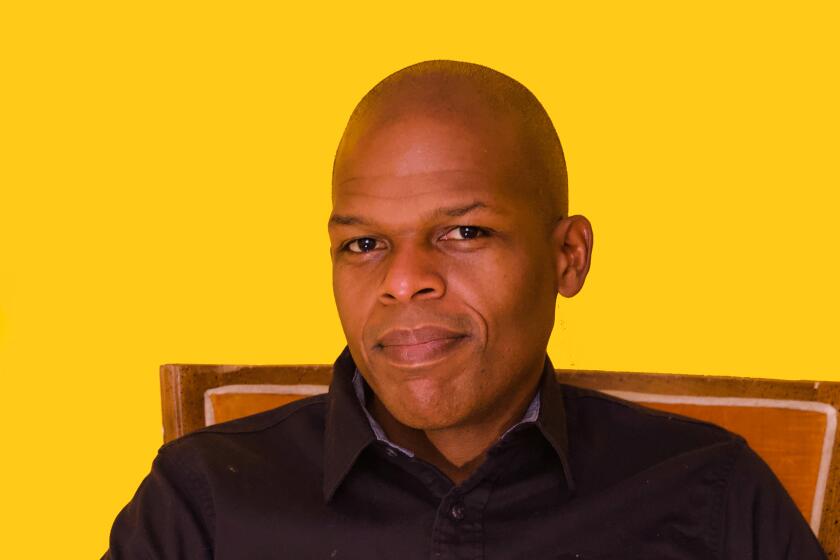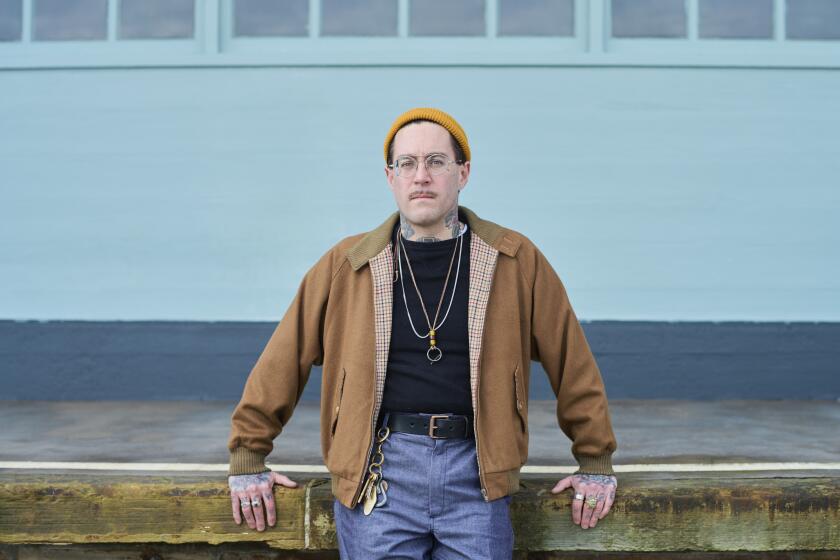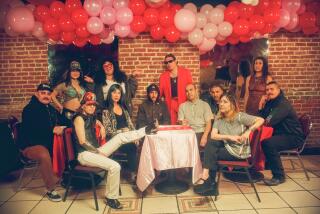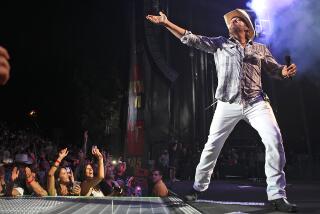How Keith Haringâs art transcended critics, bigotry and a merciless virus
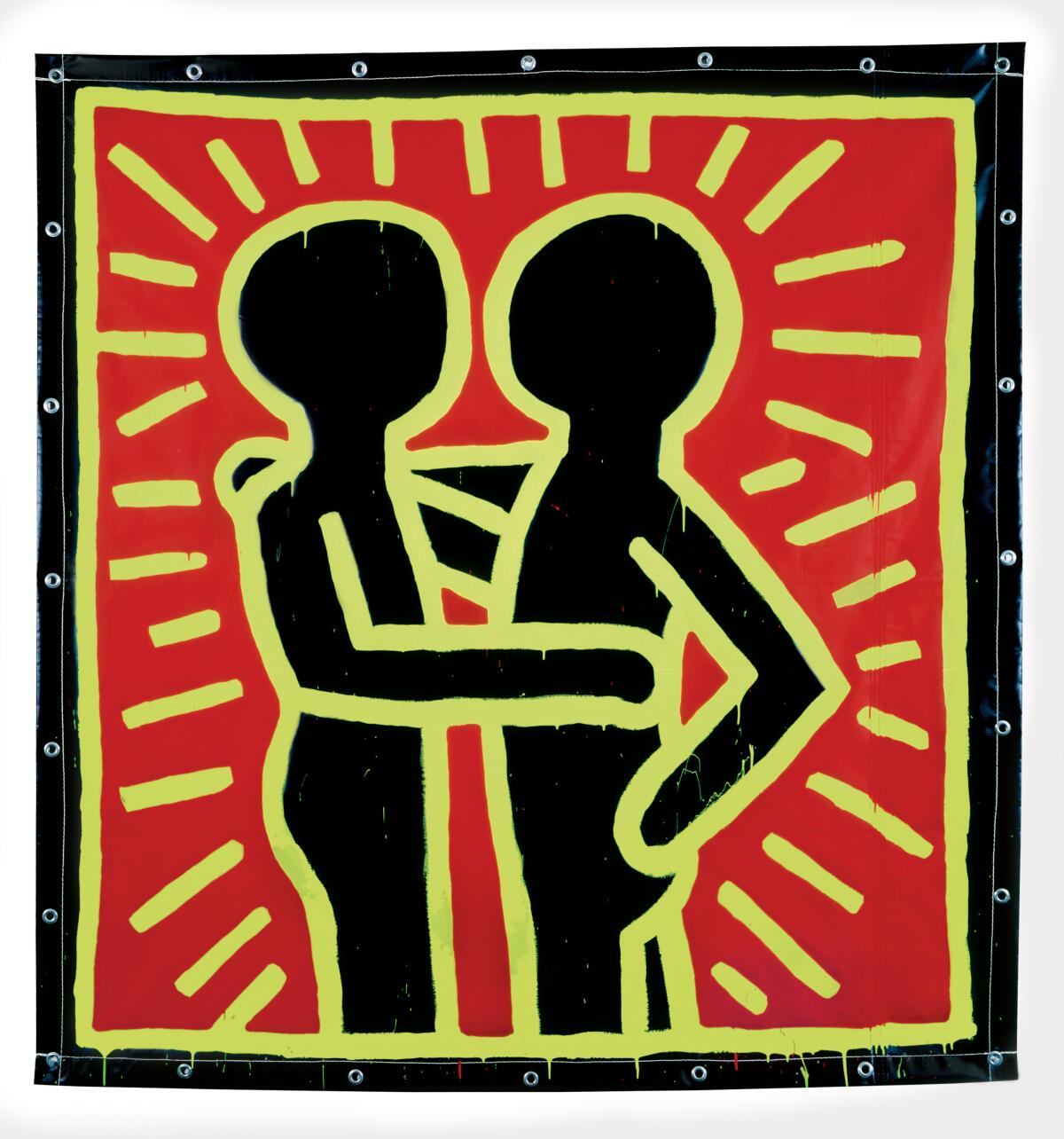
Book Review
Radiant: The Life and Line of Keith Haring
By Brad Gooch
HarperCollins: 512 pages, $40
If you buy books linked on our site, The Times may earn a commission from Bookshop.org, whose fees support independent bookstores.
I began reading Brad Goochâs biography of Keith Haring with the last chapter, on Haringâs untimely death from AIDS. I donât usually read biographies out of order, but since I (like many) knew all too well how Haring died, I hoped I might learn something different by finishing at a point when the artist was still alive.
Luckily, you donât have to read âRadiantâ backward to get to know the living Haring. Gooch, the author of sensitive biographies of Flannery OâConnor and Frank OâHara, made it his mission to show how much living and creating Haring packed into just 31 years, and he more than succeeds. âRadiantâ not only gives us a much-overdue appreciation of Haring as an important artist. It also paints an exhilarating portrait of a young artist finding himself and his calling.
The writerâs ambitious approach to the historical novel uses techniques reminiscent of âThe Handmaidâs Taleâ to examine the shifting meaning of freedom.
From the moment he was old enough to hold a pencil, Haring learned to draw from his father and a Disney drawing book, making Mickey Mouse out of two circles. He always made art. The question, for him, was what for? His parents suggested he become a commercial artist. But once he discovered Robert Henriâs book âThe Art Spirit,â Haring knew he wasnât interested in âart as a means of making a livingâ but rather, as Henri writes, âas a means of living a life.â
Haring found his home at New Yorkâs School of Visual Arts, where he enrolled in 1978. âIt was like landing in a candy store, or better,â he wrote in his journal, âa gay Disneyland.â A friend remembered that Haring struggled to stay âwithin the confines of his classes. You couldnât open a broom closet that he hadnât painted or transformed.â
Matt Lodderâs âPainted People: 5,000 Years of Tattooed History from Sailors and Socialites to Mummies and Kingsâ is a lively exploration of an underexamined art.
One day during this period, Haring noticed an âempty panel covered in soft black matte paper on a station wallâ in the subway, and the rest, as they say, is history. âWithin the next five years, he would make more than five thousand chalk drawings throughout New York Cityâs five boroughs,â Gooch writes, ârealizing one of the largest public art projects ever conceived.â
Gooch draws on Haringâs prolific journals, which reveal a passionate but pragmatic young artist. Eerily, even on his 24th birthday, Haring seemed to sense his future iconic status. âToday I am 24 years old. 24 years is not a very long time, and then again it is enough time,â Haring wrote. âI have added many things to the world. ... I know, as I am making these things, that they are ârealâ things, maybe more ârealâ than me, because they will stay here when I go.â
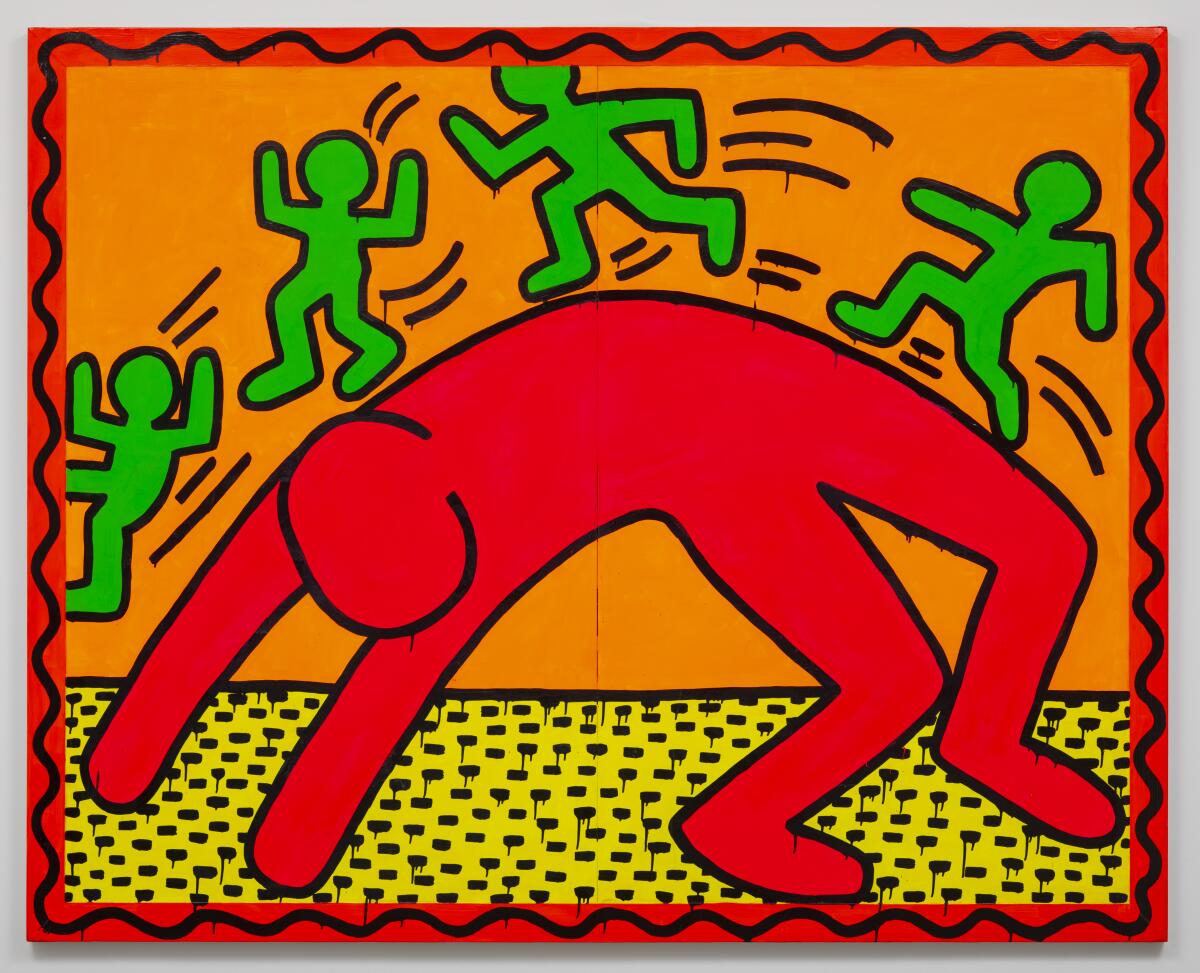
It was the year Haring turned 24, 1982, that a syndrome called GRID, or âgay-related immune deficiency,â was first reported. By the next year, Haring was showing the first symptoms of HIV infection.
1982 also found the artist busy with his first gallery show, at which a quarter-million dollarsâ worth of his work was sold and Andy Warhol stopped by. Warhol would go on to take Haring, along with Jean-Michel Basquiat, under his legendary wing. Not every young artist gets to be mentored by their still-living hero: Haring considered Warhol âthe most important artist since Picasso.â
Gooch, âas a poet and fiction writer, also young and living downtown at the time,â obviously has a great personal attachment to and understanding of Haring and his art. His chronicle of Haringâs volcanic rise is deeply engaged with the culture of the time and place â not only the art world but also the gay community and New York. But at its heart, âRadiantâ is the story of a young artist grappling with the drive to create and the challenges of commercial success.
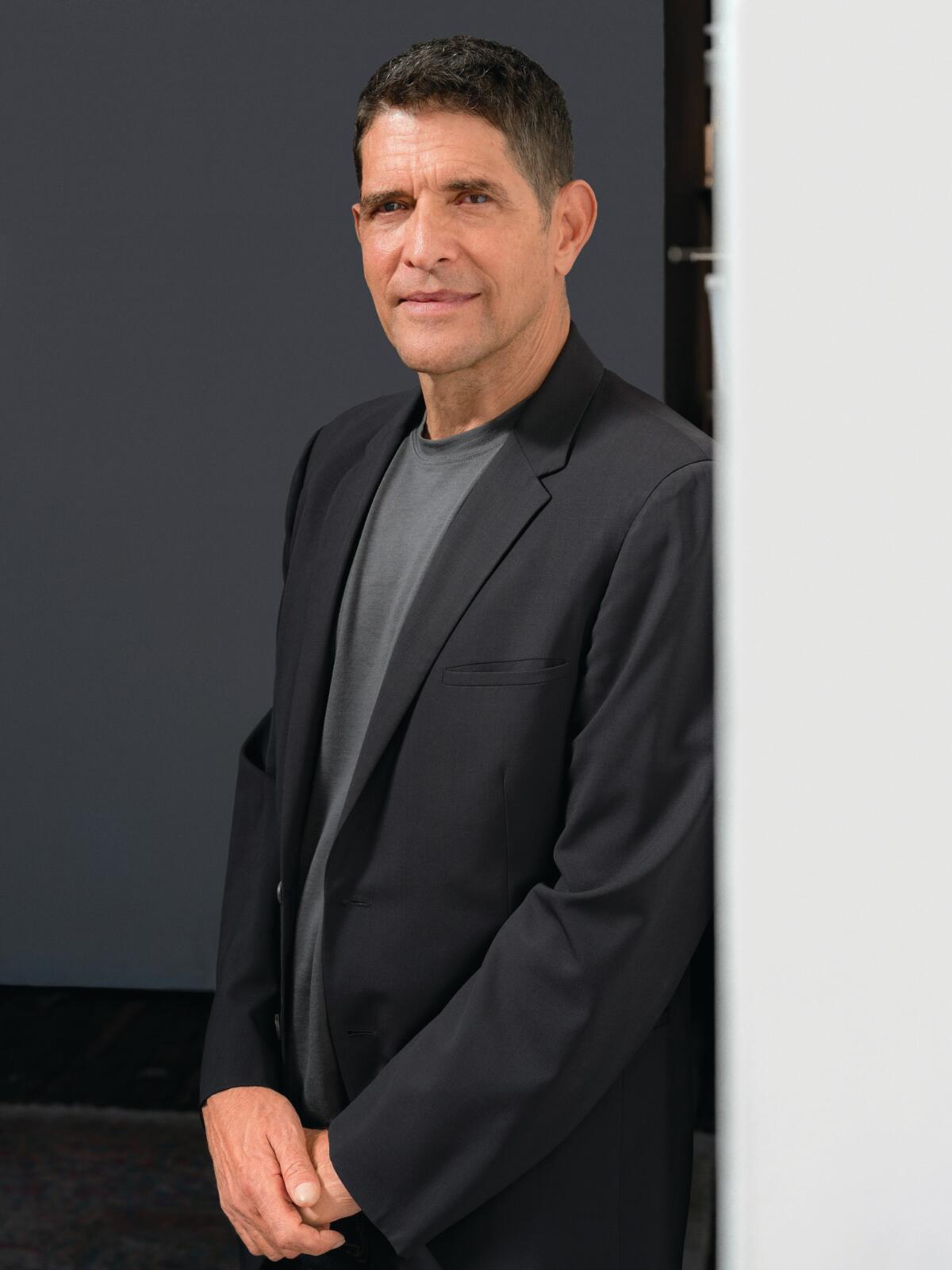
And there could be little doubt of Haringâs fame once he found himself competing with his friend Madonna for men. Even Warhol acknowledged in his diary that he was jealous.
Perhaps Goochâs most important contribution as a biographer is to solidify Haringâs reputation as a serious political artist. After Ronald Reaganâs election, Haring depicted him as a figure âwith a TV head, waving an American flag. ... He has a cross in his hand. In the other hand, he has missiles.â
Haringâs drawings of penises and gay sex were, as Gooch rightly has it, âautomatically politicalâ for the era. âKeith was heroic in having gay content in his work,â poet John Giorno said, at a time âwhen we all know that being a gay artist is the kiss of death.â Haring memorably advocated safe sex during the AIDS epidemic, with images of condoms and messages such as âSafe Sex or No Sex.â
While modern audiences might be more likely to understand the import of these themes, many critics at the time discounted Haringâs work as âfast food,â as one put it, adding, âItâs a good time, itâs boogieing on a Saturday night, itâs alive, but great, no.â One curator blamed Haringâs commercial appeal for the reluctance to take his art seriously, saying, âI think Haring was so successful that other artists could not forgive him.â Gallerist Jeffrey Deitch pointed out that most artists enjoying Haringâs level of financial success would have been churning out even more sellable work. But Haring was committed to public projects such as murals, which he did for little or no compensation.
In 1987, during a period of extensive travel, Haring noticed that he was short of breath. The following year, while in Tokyo, he discovered a small purple spot on his leg that, when he returned to New York, was confirmed as Kaposiâs sarcoma. Haring told almost no one of his diagnosis in July 1988. In August, Basquiat died of a heroin overdose at 27. Writer Glenn OâBrien had once asked Basquiat who his favorite painter of his own generation was. âHe didnât hesitate, but said, âKeith Haring.ââ
When Haringâs lover, Juan Dubose, died of AIDS, the artist said, âI now call our friends, and itâs very hard, because my telling them that Juan had died of AIDS is the same as telling them that Iâm going to die of AIDS. I hadnât even told my parents that I was sick yet, and I had to tell them about Juan.â
Haring told journalists that he was afraid only of no longer being able to work. âThatâs the point that Iâm at now, not knowing where it stops, but knowing how important it is to do it now.â Later, he would write, âArtists are never really ready to die.â He was going to the studio and working as usual two weeks before he died. Gooch describes his subjectâs death with intention: âKeith Haring lived until 4:40 a.m. on February 16, 1990.â
We all die; Haring lived as fully as he could for as long as he could. The tragedy is undeniable, but so is the triumph of Haringâs art, advocacy and public spirit. Goochâs âRadiantâ has given us a more vibrant and complete picture of the enduring gifts of Keith Haringâs life.
Jessica Ferri is the owner of Womb House Books and the author, most recently, of âSilent Cities San Francisco.â
More to Read
A cure for the common opinion
Get thought-provoking perspectives with our weekly newsletter.
You may occasionally receive promotional content from the Los Angeles Times.
